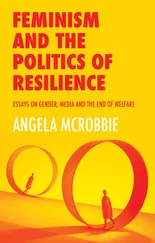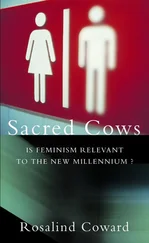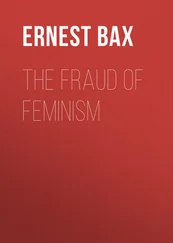1 ...6 7 8 10 11 12 ...21 Feminism, in its first, second and multiple successive waves, has achieved relative success in terms of equality. Viewed from basic emancipatory expectations, feminism has worked wonders in some quarters and has laboured to ensure that some women acquire full citizenship status. The basic requirements of a feminist programme of social emancipation, formulated in the 1970s in terms of equal pay, equal educational opportunities, socially funded child-care, access to contraception and abortion, have been partially accepted, if not fully achieved. The pursuit of equality can be documented with hard data.
Sociometrics provide examples worth reading. Salary equality has not been achieved even in advanced liberal democracies, despite a quantitative increase in the presence of women in the labour market. The disparity rates remain high: the average gender pay gap in the EU is 16.2 per cent, while the gender overall earnings gap in the EU is a staggering 39.6 per cent. 6Worldwide, the average gender pay gap is reported to be 15.6 per cent based on standard measurements and 18.8 per cent based on factor-weighed measurements by the International Labour Organization. 7At this rate, as Laurie Anderson wittily suggested in one of her memorable albums, it will be the year 3642 before women actually achieve salary parity. 8
Across the EU today, 926.8 per cent of ministers and 27.7 per cent of members of parliament are women, and world-wide on average, 18 per cent of ministers and 24 per cent of parliamentarians are women. 10At the time of writing, the presidents of the International Monetary Fund and the European Central Bank are women (respectively Kristalina Georgieva and Christine Lagarde), as is the President of the European Union (Ursula von der Leyen). From Germany to Nepal and Serbia to New Zealand, quite a few countries now have women presidents or prime ministers (respectively Angela Merkel, Bidya Devi Bhandari, Ana Brnabić and Jacinda Ardern), some of whom are quite media-savvy and Instagram-able. The young prime minister of Finland, Sanna Marin, is the happily heterosexual daughter of a lesbian couple. With Nancy Pelosi as Speaker in the American Congress, and Kamala Harris, the first woman of colour to serve as Vice-President of the United States, things have never looked better for women in politics.
Women nowadays can be financially autonomous and own property, although they still own less than 10 per cent of the world’s wealth. 11Just as importantly, girls and women in most regions have secured access to higher education, although the problem of female illiteracy in the world remains serious, as Nobel laureate Malala Yousafzai’s work shows. Many women have fulfilled Virginia Woolf’s (1980 [1930]) dream of joining the academic procession of the learned men and thus gaining admission to the formal professions, as well as to scientific research and scholarship.
Academic feminism and the feminist revolution in education and academic research are successful ongoing experiments. However, as Howie sharply put it: ‘the amount of extraordinary work already published in the field of feminist theory is a blessing and a curse’ (2010: xi), as theory does not always connect to practice. Academic feminist scholarship has indeed produced extensive commentaries on the major topics and texts in the Humanities and Social Sciences, from companions and encyclopaedias, to the Handbook of Critical Menstruation Studies (Bobel et al., 2020). Despite intersectional efforts, however, the issue of diversity is still central to feminism and the few feminist professors of colour in the mostly white women’s and gender studies curricula experience isolation and extra burdens of responsibility (Wekker, 2016). Greater efforts are needed to diversify gender studies and to respect multiple axes of oppression, in keeping with demands voiced by contemporary movements to change the university and to decolonize the curriculum. Moreover, the success of academic feminism has been contained mostly within the faculties of the Humanities and Social Sciences. Women’s, feminist, gender and queer studies courses are practically absent in the Life Sciences and generally slow in Science, Technology, Engineering and Mathematics (STEM) education.
But the data also tell another, more cautionary, tale. The social category of ‘women’, which was statistically absent from most social and economic data research in the post-Second World War years in keeping with traditional patterns of patriarchal exclusion of gendered subjects, has now been made very visible. Emancipation can therefore be assessed by the extent to which women have achieved the status of fully quantified statistical units. Their individual complaints, pain, secrets and silences have been reformatted into manageable scientific information, which is a powerful tactic in data-driven cognitive capitalism (Moulier-Boutang, 2012). Gender metrics and statistics are a welcome index of progress, which indicates that ‘women’ are now a majoritarian category integrated into the economic and social structure of advanced economies (Braidotti, 2002). The hegemony of gender as a feminist notion can be seen ‘as a sign of the hegemonization and denaturalization of the gender apparatus, as well as its consolidation across a spectrum of social and political contexts’ (Repo, 2016: 126).
This is definitely a step forward, but, on closer scrutiny, the newly acquired quantified visibility turned out to be a sideways move, mostly confined to Europe and North America, that created as many problems as it solved. Firstly, metrics tell a partial tale and even the documented extent of the political and professional success of women is incomplete at best. The relative degrees of equality in fact are not evenly spread across all social classes and ethnicities and a sole statistical focus on gender plays to the detriment of other intersectional variables (Chow, 2010). This restricts the field of relevance and applicability of feminist politics.
Secondly, gender mainstreaming comes with a hefty price tag. It is indeed the case that since the 1980s, analyses of gender have become a widespread practice in leading institutions such as the World Bank and the European Union, which is the main source of the figures I am presenting in this chapter. Gender has become an accepted instrument to assess the discrepancies in power and privilege in relation to social progress and capital accumulation. The objective of gender equality in most liberal democracies is not to reform or remove gender roles but ‘to break down their stringency in order to allow individuals to make allegedly better, more rational choices for the benefit of the species and the economy’ (Repo, 2016: 154).
Equality narrowly defined as balancing the ratio between the two sexes, however necessary as a starting point for the implementation of a feminist agenda, is not sufficient on its own. Even assuming that women – or rather, some women – have become more equal, who are they actually equal to? (Braidotti, 1994; Irigaray, 1994 [1987]). Which vision of the human have they become the equal of, similar to, or even the same as? What’s the human for feminism? Clearly the outreach and wider implications of the feminist agenda mobilize not only the whole of society, but also shared assumptions about our species. This is why I think that feminism is indeed the mother of all questions (Solnit, 2017); that it is for everyone (hooks, 2000), and although not everyone actually is a feminist, maybe they should be (Adichie, 2014).
But the generous fecundity of the assertion that feminism is for everybody is tricky. For one thing, the fact that the more radical or transformative aspects of the feminist political agenda are still in progress means that everyone can activate them. The tendency of liberal economies to blur the boundaries of binary gender oppositions also means that women – even in their great variety – do not own feminism. It is undeniable that today ‘Men, nonbinary and genderqueer people are proud to call themselves feminists and use feminist thought in their work’ (D’Ignazio and Klein, 2020: 14). With mainstreaming comes transversal diversification.
Читать дальше












